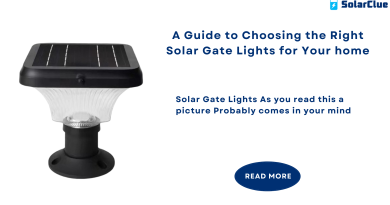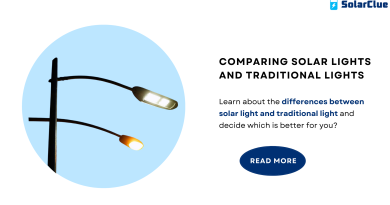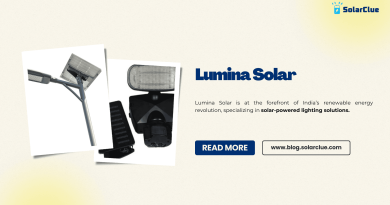How to Maintain Solar Garden Lighting
Maintaining your solar garden lighting is key to ensuring its longevity, efficiency, and nighttime charm. Whether you’ve installed decorative path lights or functional spotlights, proper care keeps them shining brightly using sustainable solar power. In this detailed guide, we’ll walk through essential steps on how to maintain solar garden lighting, helping you avoid common issues and prolong your investment.
Table of Contents
- 1 Why Solar Garden Lighting Needs Maintenance
- 1.1 1. Clean Solar Panels Regularly
- 1.2 2. Check for Obstructions
- 1.3 3. Replace Batteries Annually
- 1.4 4. Inspect and Clean Light Fixtures
- 1.5 5. Test the On/Off Sensor
- 1.6 6. Protect Lights During Monsoon or Snow
- 1.7 7. Secure Mountings and Stakes
- 1.8 8. Avoid Artificial Lighting Nearby
- 1.9 9. Store Properly in Off-Seasons
- 1.10 10. Perform Seasonal Inspections
- 2 Benefits of Well-Maintained Solar Garden Lighting
- 3 Common Issues and Troubleshooting Tips
- 4 DIY Maintenance vs. Professional Help
- 5 Eco-Friendly Maintenance Tips
- 6 Final Thoughts on Solar Garden Lighting Care
- 7 FAQs
Why Solar Garden Lighting Needs Maintenance
Solar lights are exposed to various environmental elements. Dust, debris, moisture, and even wildlife can impact their performance. Regular upkeep protects your solar power system components from wear and ensures they absorb sunlight efficiently.
1. Clean Solar Panels Regularly
Solar panels are at the heart of your garden lighting. Use a soft cloth with mild soap and water to gently clean the panel surface every few weeks. Avoid harsh chemicals that can damage the coating.
Tips:
- Clean early morning or evening when the panel is cool.
- Remove bird droppings immediately as they block sunlight.
2. Check for Obstructions
Ensure there are no overgrown branches, dirt, or objects casting shadows over your solar light panels. These reduce the amount of sunlight the panel receives, weakening charging efficiency.
3. Replace Batteries Annually
Most solar lights use rechargeable AA or AAA batteries. After 12-18 months, these batteries may lose their ability to hold charge. Replacing them keeps your lights functional throughout the night.
How to Replace:
- Unscrew the battery cover.
- Replace with the same type and capacity.
- Avoid mixing old and new batteries.
4. Inspect and Clean Light Fixtures
Remove dirt, insects, and moisture from inside the light casing. This ensures brighter illumination and prevents circuit damage.
Pro Tip:
Use a dry cloth and a small brush to clean hard-to-reach corners.
5. Test the On/Off Sensor
Your solar light relies on a light sensor to turn on at dusk. Test it by covering the panel during the day. If the light doesn’t turn on, clean the sensor or consider replacing it.
6. Protect Lights During Monsoon or Snow
In extreme weather, bring your solar garden lights indoors or use waterproof coverings. Moisture can corrode wiring and internal components.
7. Secure Mountings and Stakes
Loose or tilted lights can result in improper panel orientation. Check stakes and mounts for rust or wear and realign them for maximum sun exposure.
8. Avoid Artificial Lighting Nearby
Artificial lights near solar power system installations may confuse light sensors. Keep your garden lights away from bright porch lights or security floodlights.
9. Store Properly in Off-Seasons
If you’re storing solar lights, clean and dry them thoroughly. Remove batteries and store in a cool, dry place.
Storage Tips:
- Wrap lights in soft cloths to avoid scratches.
- Label parts for easy reinstallation.
10. Perform Seasonal Inspections
Inspect all components—panels, casings, wiring—every season. Early detection of rust, corrosion, or dimming light saves money on replacements.
Benefits of Well-Maintained Solar Garden Lighting

Keeping your solar garden lighting in top shape ensures:
- Brighter illumination
- Extended battery and panel life
- Greater savings from consistent solar power use
- Enhanced curb appeal and safety
Common Issues and Troubleshooting Tips
Dim or Flickering Light:
- Battery may be low or expired
- Panel could be dirty or shaded
Light Not Turning On:
- Check sensor and switch settings
- Ensure the solar panel is receiving direct sunlight
Water Inside Fixture:
- Re-seal casing with silicone
- Dry and air out before reuse
DIY Maintenance vs. Professional Help
Basic cleaning and inspections can be done at home. However, if wiring or internal circuitry is damaged, seek professional repair to avoid further issues.
Eco-Friendly Maintenance Tips
- Use biodegradable cleaning agents
- Recycle old batteries properly
- Repurpose old solar lights as garden decor
Final Thoughts on Solar Garden Lighting Care
Maintaining your solar garden lighting doesn’t require technical expertise. With consistent attention to cleanliness, battery health, and sun exposure, your lights will brighten your outdoor spaces beautifully night after night. Sustainable, cost-effective, and low maintenance—solar power remains one of the most practical solutions for outdoor lighting.
For a wide variety of top-performing solar lights, maintenance products, and expert advice, visit SolarClue. You can also explore helpful blogs at blog.solarclue.com to keep your solar knowledge glowing.
FAQs
Q1: How often should I clean solar garden light panels?
A: Every 2-3 weeks, depending on your environment.
Q2: Can I use vinegar or alcohol to clean solar panels?
A: No, these can damage the protective coating. Use mild soap and water.
Q3: Do solar garden lights need direct sunlight all day?
A: At least 6-8 hours of direct sunlight ensures optimal performance.
Q4: Why are my solar garden lights not turning on even after full day charging?
A: Check the batteries, panel cleanliness, and ensure no artificial light is confusing the sensor.
Q5: Is it okay to leave solar lights outside during winter?
A: Only if they’re waterproof and rated for snow; otherwise, store them indoors.
Looking to make the most out of your solar lighting? Shine brighter by visiting solarclue.com today!




